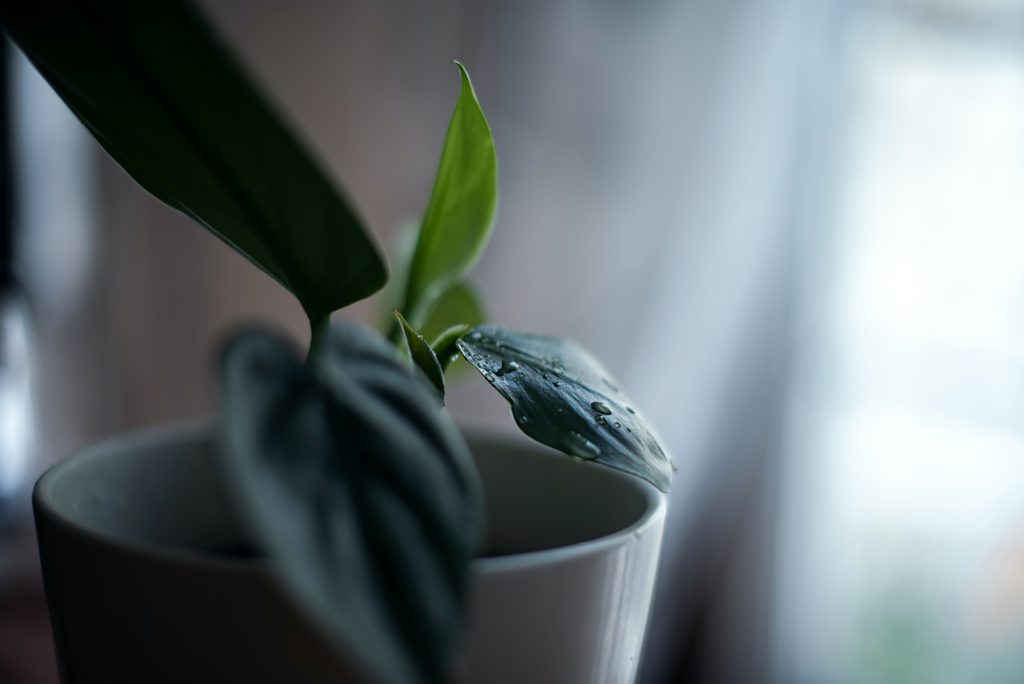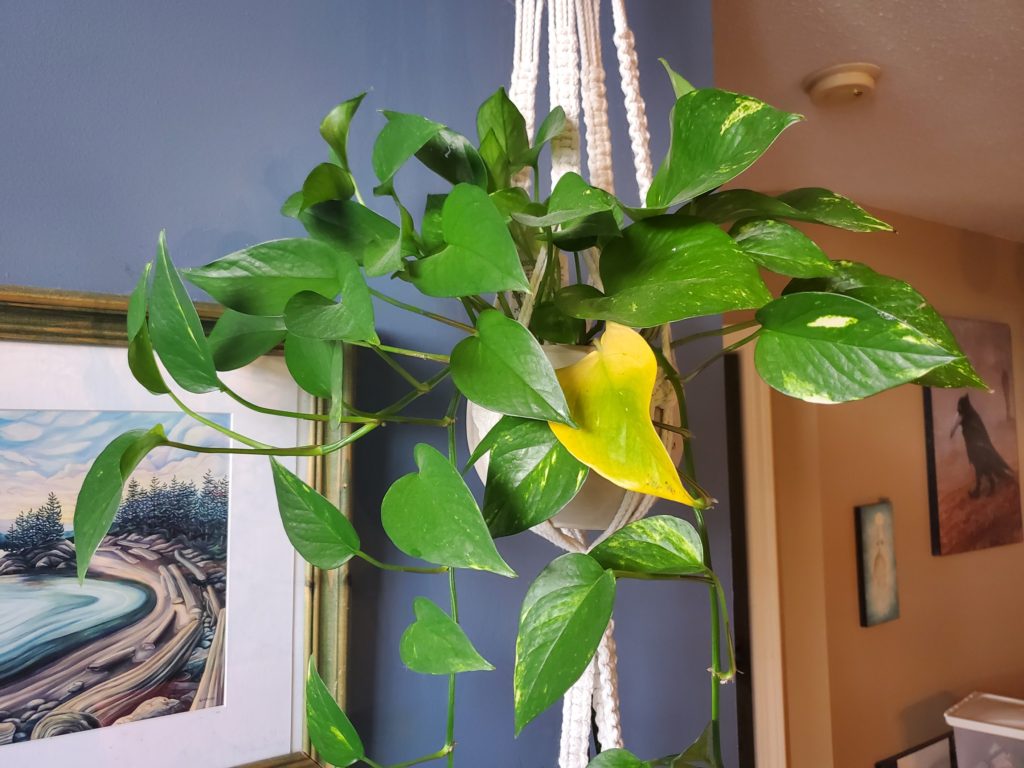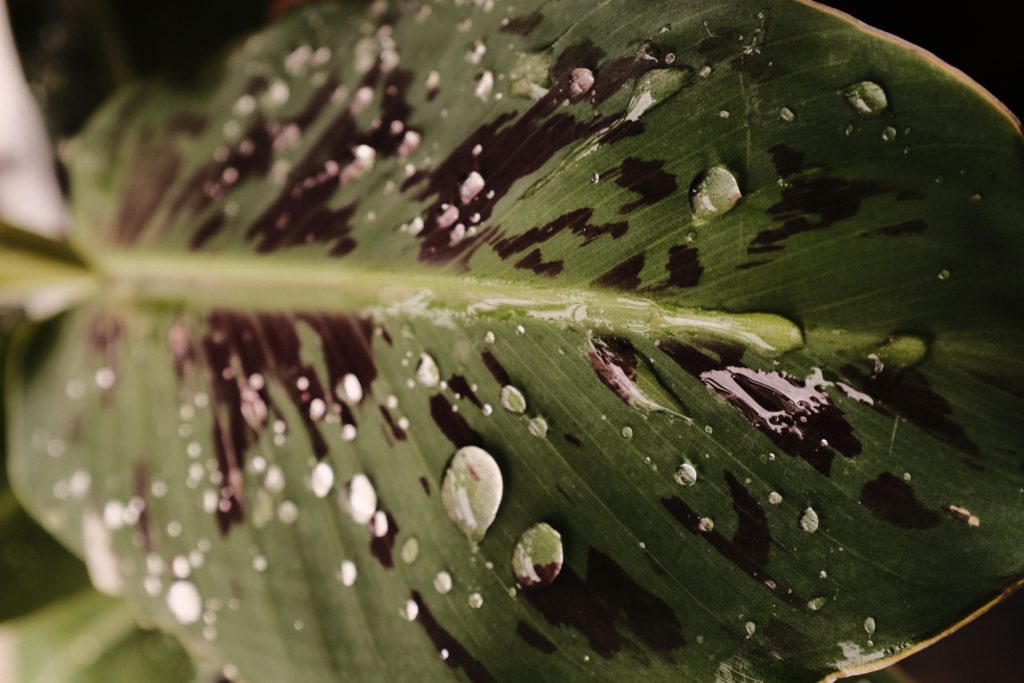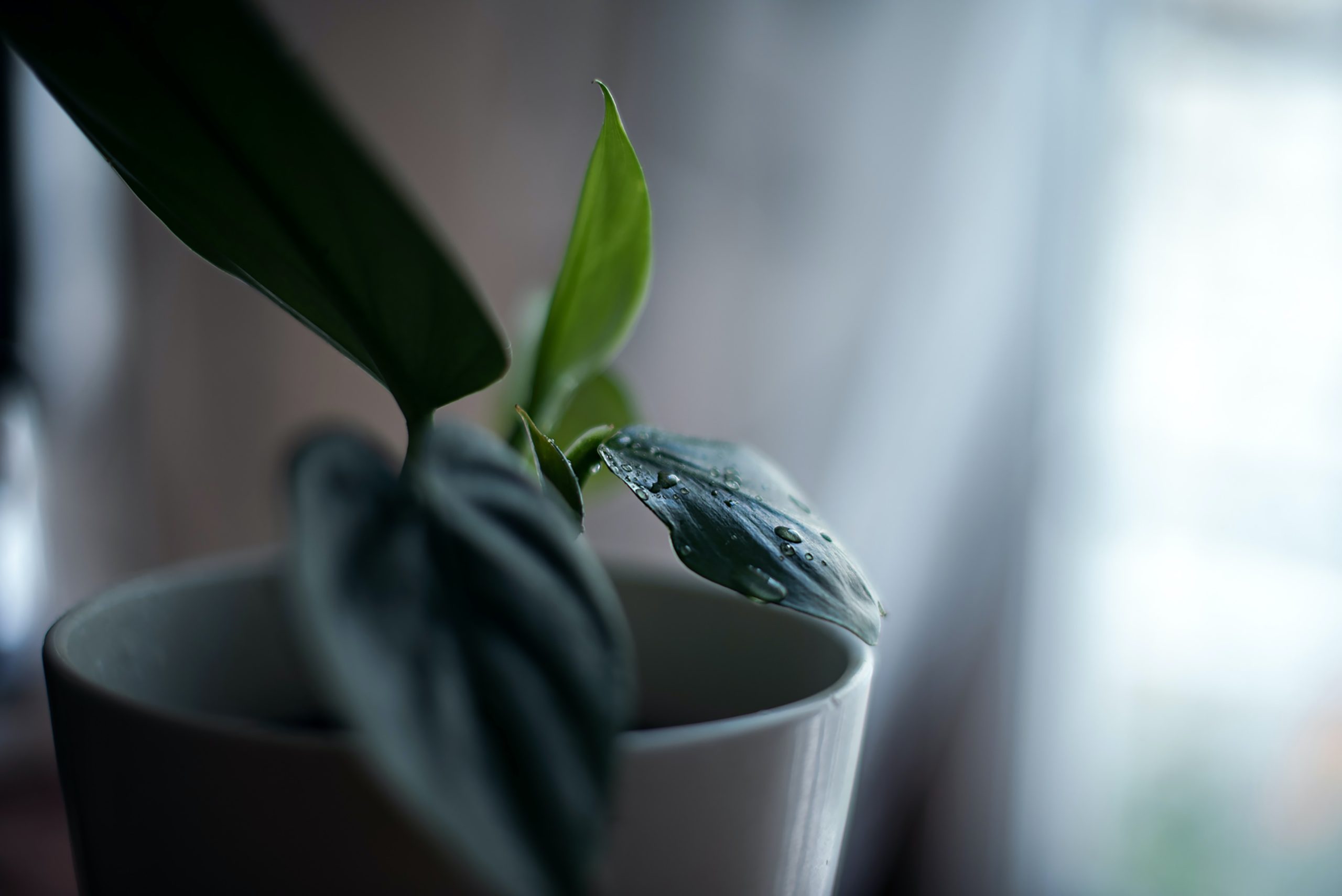Here’s Why Your Philodendron Leaves are not Unfurling:
Insufficient Humidity. The main reason the leaves of your philodendron are getting stuck and not unfurling is due to a lack of moisture in your home. Increase the humidity by misting the plant every other day or use a wet gravel tray underneath your plant. Philodendrons require between 50%-75% humidity to thrive.

Tips to help your Philodendron leaves unfurl:
If your philodendron’s leaves are becoming stuck and are not unfurling here are some helpful ways I’ve found that are successful at opening them:
- Increase humidity. Use a humidifier, mist your plant every two days, or even run your shower for a few mins to increase the overall moisture in your home.
- Sunlight. Make sure it is not sitting in a dark corner, they will thrive when given 8 hours of indirect light.
- Temperature. They prefer warmer temperatures, for best results keep it between: 13-34C / 55-90F.
- Fertilizer. You can add fertilizer monthly during the spring and summer growing seasons.
- Use your fingers. Gently pull open the leaves a tiny bit if you are feeling really impatient.
Here’s Why Your Philodendron has Yellow Leaves:
Overwatering. Letting your plant sit in a puddle of water for too long can be detrimental to the health of your philodendron. Overwatering strips the soil of nutrients and the plant will be unable to gain a foothold in the soil which can lead to root-rot. Use a pebble tray underneath the pot to catch any extra water dripping out to help prevent it from getting too soggy. Keep in mind, some varieties of philodendron do have naturally occurring variegated yellow leaves so don’t worry too much if this is the case. You’ll know it’s a problem when the yellow leaves start falling off.

Tips to Help a Philodendron with Yellowing Leaves:
Don’t panic if your philodendron has begun losing colour on some of it’s leaves. I have used these methods on my own dying philodendrons and they can help you restore your plant to it’s original glory:
- Water every 7-14 days during summer months. Water once a month during the winter.
- Drainage. Allow water to drain out completely, do not let your philodendron get wet-feet.
- Keep Humidity above 50%. Buy a hygrometer to monitor the moisture levels in your home.
- Pests. Bugs will ruin your plants appearance by feeding on sap. Remove any insects as soon as possible.
- Well draining soil. Make sure your pot has drainage holes in the bottom. Drill some holes if necessary.
Fixing a Philodendron with Yellow or Brown Spots:
Remove all leaves with spots. Leaf spots (aptly named leaf spot disease) are caused by fungus. This not only looks unpleasant, but can also cause leaves to drop prematurely. The fugus can also live on dead leaves and in the roots. Just as we humans sometimes need to be quarantined, as do infected plants. Any plants in close proximity to the infection are at risk of becoming infected as well, keep them far away from your other plants to prevent the colony from spreading. Removing fungus from a single plant is simple, but if all of your plants are infected you may never completely eradicate it. Reusing soil from a plant that has been infected is a bad idea, so it’s best to discard any infected plants and soil in the garbage (not the compost).

Follow these tips to stop leaf spot disease (fungus):
- Reduce misting. A buildup of water on the leaves can attract fungus. Make sure to keep the foliage dry.
- Remove infected leaves. Trim off any leaves with traces of leaf spot disease to prevent it from spreading.
- Quarantine. Keep the infected plant away from all your other plants and be sure to discard any leaves.
- Use fungicide. Chemicals are sometimes necessary to kill off any harmful diseases.
- It’s not a big deal. Most plants can handle a bit of fungus and it will tolerate it happily…if you can.
How to Remove Black Bugs on a Philodendron Plant:
Quarantine your plant immediately to prevent the spread of the insects. Use a mixture of water with a few drops of dish-soap (or you can use isopropanol with 50% water for a more serious infection) and spray the foliage to effectively kill the bugs. Scrape off any dead bugs with a cotton swab or spoon and dispose of them into the trash. Don’t put the carcasses in your compost or it could ruin your future soil harvest. Prune infested leaves and stems to help prevent any future outbreaks.
Common insects that can infect a Philodendron:
- Thrisps. Tiny yellowish winged insects like to feed on the sweet sap your plants produce in their leaves.
- Mealy Bugs. These white, cottony insects congregate on the leaves and stems will cause unsightly sores that will stunt the growth of your plants.
- Spider Mites. Found on the underside of leaves, these will suck the sap from the leaves leaving behind tiny brown and black dots.
- Aphids. These can be green, brown, black or red and found on the bottom side of leaves. They will feed on the sap and will begin dripping their saliva, harming the leaves causing them to turn brown and black.
- Whitefly. These moth-like pests will collect on the bottoms of leaves and secrete a honeydew saliva that will damage the plant and encourage fungal growth as well.
- Scale. Found on the leaves and stems, these flat, round shelled insects will slowly stunt the growth of your plants and will cause the plant to be unable to photosynthesize effectively.
The Best Soil for Philodendron Plants:
Fast draining, loose potting soil. Add some organic material like discarded leaves, bark mulch, dry grass or soil with old roots will help the plant to drain faster and will provide extra nutrients that your philodendron will love you for. Philodendrons like to have moist soil, but will not survive long if the soil is dripping wet. Repot you plant and add some organic matter to your soil mix will help it thrive like they do in the wild.
How to Repot a Philodendron (Step-by-Step):
When your philodendron begins to show roots poking out of the bottom of the pot, it is time to give it a bigger home. Replacing the soil is a great way to combat root-rot, or if you simply need to improve drainage.
- Prepare a new pot. Choose a pot that is 1-2 Inches (5-10cm) larger than it’s current pot. Make sure it has multiple drainage holes. Fill 1/3 full with loose, well-draining soil. Add organic matter for best results.
- Lift from pot. Gently squeezing the sides of the pot will help loosen soil making removal easier.
- Break apart the roots. Gently separate the roots (massaging motion) and remove most of the excess soil.
- Place into new pot. Center your plant straight up in new pot and fill remaining 2/3 with more soil. Press down on soil with fingertips to ensure the plant is secured safely in the new pot.
- Water thoroughly. Make sure you let water drain completely before putting it back on your windowsill.
Here’s why Your Philodendron Leaves are Small:
If your philodendron is only growing tiny leaves, there are steps you can take to help your plant grow bushier with fatter leaves. It is not detrimental to your plant if it has small leaves, and some people do prefer tiny leaves, but, if you want a bigger, fuller philodendron here are some reasons they may not be growing to their full potential:
- Not enough light. Increase the amount of daily light your plant receives to encourage bigger leaves.
- Soggy Soil. If your philodendron is consistently dripping wet, this can cause the plants leaves to grow irregularly. You may need to improve the drainage by adding holes in the bottom of its pot.
- Not enough fertilizer. These plants suck up a lot of nutrients from the soil so be sure to supplement nutrients monthly during spring and summer growing season to encourage bigger leaves.
- Nothing to hold on to. Using a stake will help the plant grow taller and bigger overall which will result in larger leaves.
- Not enough water. Without a consistent watering routine your philodendron’s leaves will become droopy, and yellow and eventually start falling off. New leaves will be small and pale and tend to get stuck.

